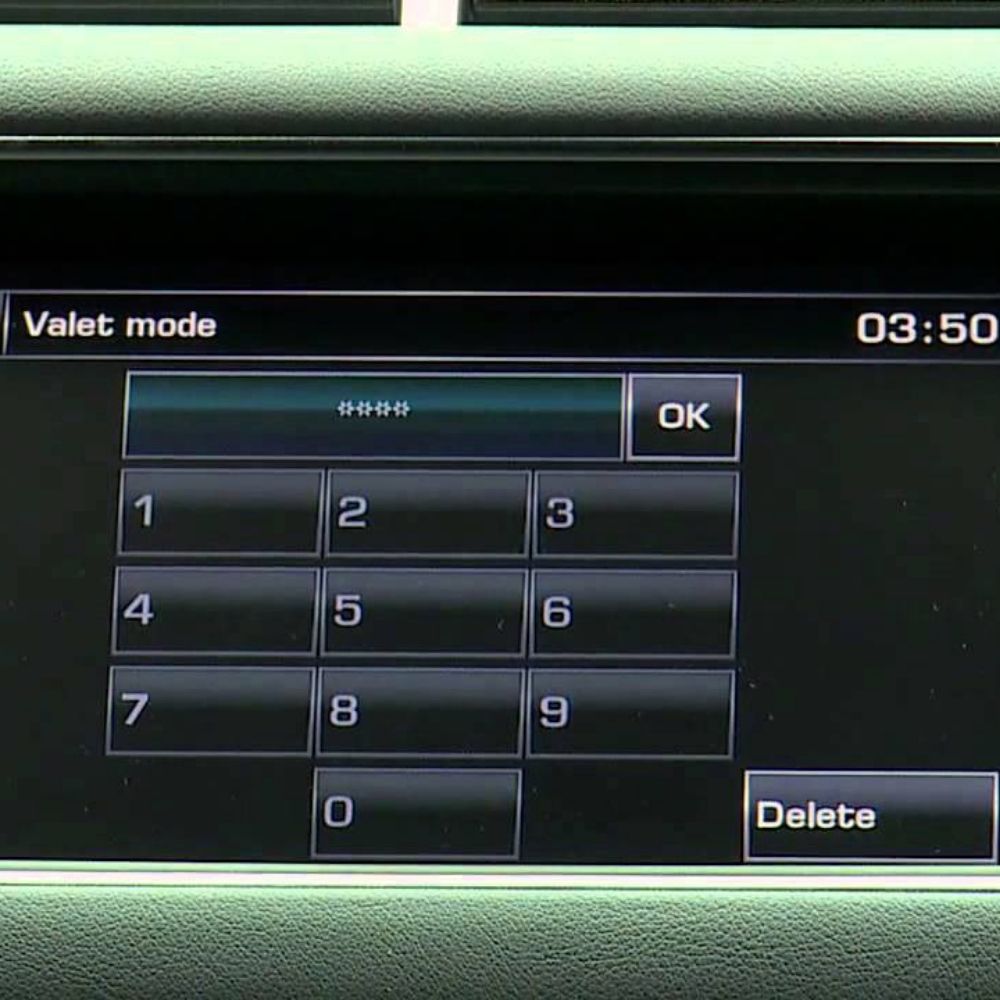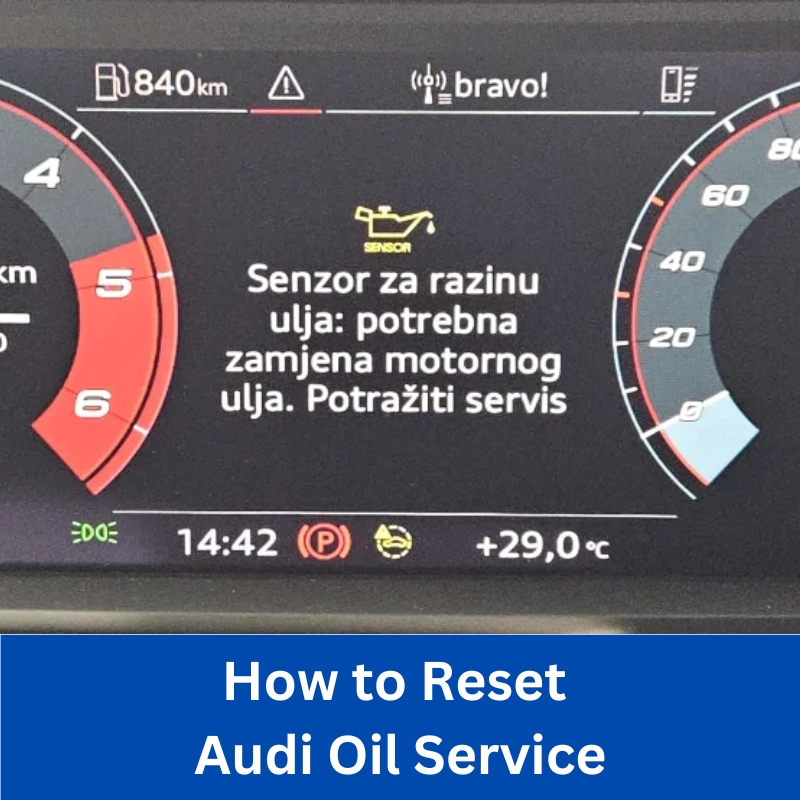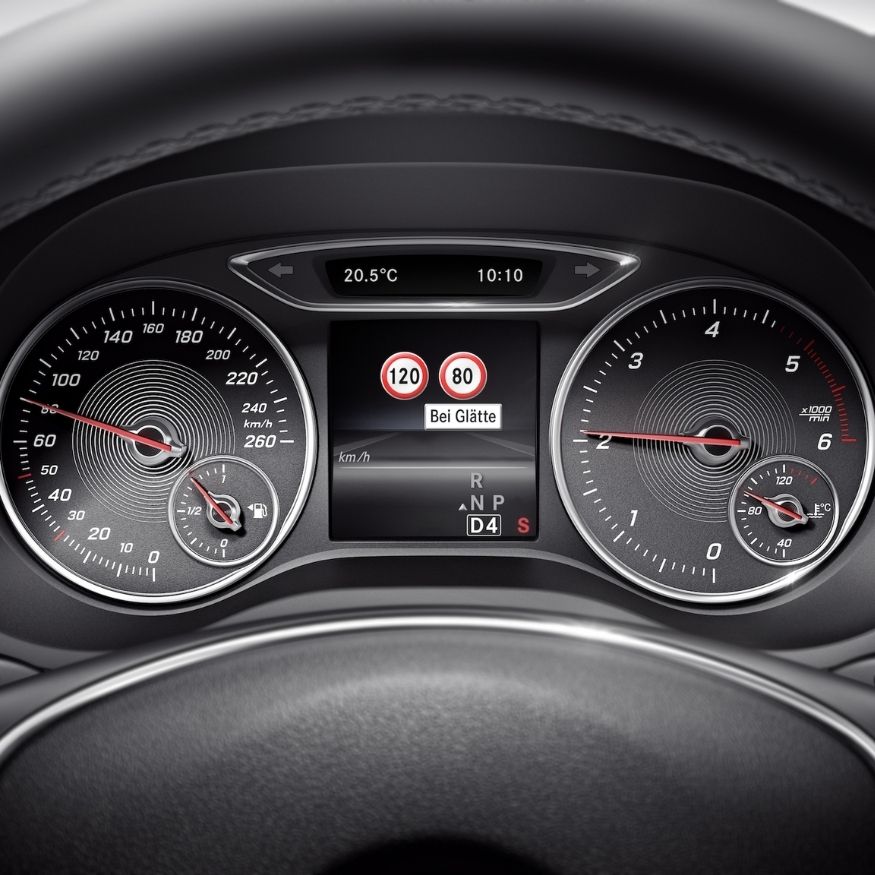

**What Is The Mercedes Benz Drive Authorization System?**
Contents
- 1. What is the Drive Authorization System (DAS) in Mercedes-Benz vehicles?
- 1.1 How does DAS work?
- 1.2 What are the key components of DAS?
- 1.3 What is the difference between DAS3 and DAS4?
- 1.4 What is KEYLESS GO and how does it relate to DAS?
- 2. What are the Common Issues and Troubleshooting Tips for Mercedes-Benz DAS?
- 2.1 What are the common problems with the SmartKey?
- 2.2 How do you troubleshoot a non-starting Mercedes-Benz with DAS?
- 2.3 What does “Place key in marked location” mean?
- 2.4 How can AutoExplain.com help with DAS troubleshooting?
- 3. What are the Steps for Replacing Components in Mercedes-Benz DAS?
- 3.1 What components can be replaced by a Vehicle Security Professional (VSP)?
- 3.2 What is the procedure for replacing a DAS4 component?
- 3.3 How do you program a new EIS?
- 3.4 What is the role of XENTRY Diagnostics in component replacement?
- 4. How to Order Theft-Relevant Parts (TRP) for Mercedes-Benz?
- 4.1 What paperwork is needed to order TRP?
- 4.2 What is a Vehicle Security Professional (VSP) and how to become one?
- 4.3 What parts can be ordered over the counter?
- 4.4 What is the Fallback Process for key replacement when all keys are lost?
- 5. Drive Authorization System (DAS) and Security
- 5.1 How does DAS prevent vehicle theft?
- 5.2 What are the security features of DAS4?
- 5.3 What is the role of encryption in DAS?
- 5.4 How does DAS comply with security standards?
- 6. Generation 5 vs. Generation 6 DAS4 Systems
- 6.1 What are the differences in the EIS location?
- 6.2 How does starting the engine differ between generations?
- 6.3 What are the implications of these changes for keyless start?
- 6.4 How do these changes affect troubleshooting and repairs?
- 7. Understanding CAN Bus Communication in DAS
- 7.1 How does CAN Bus work in the DAS system?
- 7.2 What are the common CAN Bus related issues in DAS?
- 7.3 How do you diagnose CAN Bus problems in DAS?
- 7.4 How can AutoExplain.com assist with CAN Bus diagnostics?
- 8. Programming and Key Replacement Process for DAS
- 8.1 How are new keys programmed in DAS4?
- 8.2 What tools are required for key programming?
- 8.3 What is the maximum number of keys that can be active?
- 8.4 What happens if all keys are lost?
- 9. Common Diagnostic Trouble Codes (DTCs) Related to DAS
- 9.1 What are the common DTCs associated with DAS?
- 9.2 How to interpret these DTCs?
- 9.3 How to diagnose and fix these issues?
- 9.4 How can AutoExplain.com assist with DTC diagnosis?
- 10. When to Seek Professional Help for DAS Issues?
- 10.1 What problems should be addressed by a professional technician?
- 10.2 What are the benefits of using AutoExplain.com for remote support?
- 10.3 How can AutoExplain.com help with complex DAS repairs?
- 10.4 What information should you provide when seeking assistance?
- FAQ: Drive Authorization System Mercedes-Benz
- Q1: What is the Mercedes-Benz Drive Authorization System (DAS)?
- Q2: How does DAS work?
- Q3: What are the key components of DAS?
- Q4: What is the difference between DAS3 and DAS4?
- Q5: What is KEYLESS GO and how does it relate to DAS?
- Q6: What does “Place key in marked location” mean?
- Q7: How are new keys programmed in DAS4?
- Q8: What is the maximum number of keys that can be active in the DAS4 system?
- Q9: What should I do if all keys are lost?
- Q10: How can AutoExplain.com assist with DAS troubleshooting and repairs?
The Mercedes Benz drive authorization system is an anti-theft measure that prevents unauthorized vehicle operation. If you’re facing issues with your Mercedes-Benz DAS, AutoExplain.com offers remote diagnostic and programming services to swiftly resolve these problems. Our expertise extends to various electronic control units like ECUs, TCMs, and BCMs, ensuring accurate fault identification and effective solutions.
1. What is the Drive Authorization System (DAS) in Mercedes-Benz vehicles?
The Drive Authorization System (DAS) in Mercedes-Benz vehicles is an electronic immobilizer system designed to prevent unauthorized use of the vehicle, thereby reducing vehicle theft. Since 1992, Mercedes-Benz has installed electronic immobilizer systems, and the Drive Authorization System (DAS) is currently in its 6th generation of the 4th major version. These systems ensure that only authorized keys can start the vehicle, adding a layer of security against theft.
1.1 How does DAS work?
DAS functions through a complex communication routine between the vehicle’s key and several control units. The system verifies the key’s authenticity before allowing the engine to start. This process involves encrypted messages exchanged via the CAN Bus network among the Electronic SmartKey, Electronic Ignition Switch (EIS), Engine Control Unit (ECU), Fully-integrated Transmission Control Unit (ETC), and Intelligent Servo Module (ISM). If all control units agree that the key is valid, the engine is permitted to start.
1.2 What are the key components of DAS?
The main components of the DAS system include:
- Electronic SmartKey (A8/1): The key used to access and start the vehicle.
- Electronic Ignition Switch control unit (EIS, N73): Reads the key and communicates with other control units.
- Engine control unit (ME-SFI or CDI, N3/10 or N3/9): Controls the engine functions.
- Fully-integrated transmission control unit (ETC, Y3/8n4): Manages the transmission system.
- Intelligent servo module (ISM, A80): Involved in gear selection and starting.
- Instrument Cluster: Participates in the DAS4 system.
 DAS4-Key-US-Version
DAS4-Key-US-Version
1.3 What is the difference between DAS3 and DAS4?
DAS3 and DAS4 represent different generations of the Drive Authorization System with notable differences in technology and functionality. DAS3 utilized both radio frequency (RF) and infrared light for vehicle access, while DAS4 exclusively uses RF signals. DAS4 also introduced the KEYLESS START system, eliminating the need for a physical ignition switch in some models.
1.4 What is KEYLESS GO and how does it relate to DAS?
KEYLESS GO is a feature integrated into DAS that allows the driver to start the car without inserting the key into the ignition. With KEYLESS GO, the driver only needs to have the SmartKey within a certain range of the vehicle. The system communicates with the key via radio frequency signals to verify its authenticity and allow the engine to start with the push of a button.
2. What are the Common Issues and Troubleshooting Tips for Mercedes-Benz DAS?
Common issues with the Mercedes-Benz Drive Authorization System (DAS) can range from key malfunctions to component failures, leading to vehicle access and starting problems. Here are several troubleshooting tips to address these issues:
2.1 What are the common problems with the SmartKey?
- Reduced Range or Inoperative Key: This can be due to a dead or weak battery. The SmartKey uses a CR2032 button cell. Press and hold any key button to check if the LED lights up, indicating a good battery.
- Key Not Recognized: The vehicle may display a message like “Place key in marked location.” This indicates that the key is not being recognized, possibly due to a depleted battery or interference.
- KEYLESS GO Malfunction: The KEYLESS GO system might be disabled inadvertently. Pressing the lock button twice disables KEYLESS GO until a button on the key is pressed again.
- Faulty Key: Sometimes, the key itself may be faulty. Ask the customer to bring in all available keys to isolate a faulty key.
2.2 How do you troubleshoot a non-starting Mercedes-Benz with DAS?
- Check the SmartKey Battery: Ensure the SmartKey battery is not depleted. Replace the CR2032 battery if necessary.
- Use the Emergency Start Feature: If the key battery is low, use the emergency starting slot in the console or stowage compartment. This hidden inductive coil delivers enough energy to the key to perform its DAS4 security functions.
- Check the EIS (Electronic Ignition Switch): The EIS may be failing to recognize the key. For Generation 5 EIS, ensure the key is properly inserted. For Generation 6, make sure the start button is functioning correctly.
- Scan for Diagnostic Trouble Codes (DTCs): Use a diagnostic tool like XENTRY Diagnostics to scan for any DTCs related to the DAS system. This can help pinpoint the specific component causing the issue.
- Check CAN Bus Communication: Ensure that the CAN Bus network is functioning correctly. Use a multimeter to check for voltage irregularities or shorts to ground or power.
- Check the Starter Relay and Solenoid: Verify that the starter relay and solenoid are functioning correctly. A faulty starter can prevent the engine from starting, even if the DAS system is working.
- Check the Fuel Supply: Ensure that the fuel pump is working and delivering fuel to the engine. A lack of fuel can prevent the engine from starting.
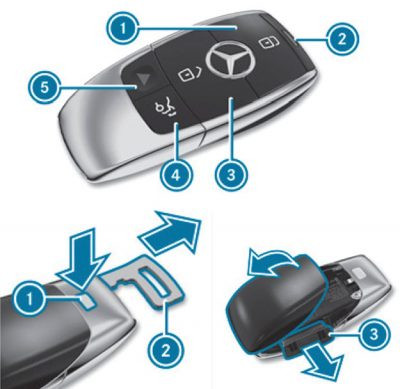 Gen6-key
Gen6-key
2.3 What does “Place key in marked location” mean?
The message “Place key in marked location” appears when the vehicle’s system cannot detect the key’s signal. This typically happens when the key battery is low or depleted. Mercedes-Benz vehicles have an emergency starting location, usually in the console or stowage compartment, where a hidden inductive coil can provide enough energy to the key for it to communicate with the system and start the car.
2.4 How can AutoExplain.com help with DAS troubleshooting?
AutoExplain.com offers remote diagnostic and programming services to help troubleshoot DAS issues. Our expert technicians can remotely access your vehicle’s diagnostic system to identify the root cause of the problem, provide step-by-step troubleshooting instructions, and perform necessary programming or module replacements. This can save time and money compared to traditional dealership visits. Contact us via WhatsApp at +1(936)2896695 or email at [email protected] for assistance.
3. What are the Steps for Replacing Components in Mercedes-Benz DAS?
Replacing components in the Mercedes-Benz Drive Authorization System (DAS) requires specific procedures and tools. If a component fails, follow these steps for replacement.
3.1 What components can be replaced by a Vehicle Security Professional (VSP)?
Vehicle Security Professionals (VSPs) who are registered with the Secure Data Release Model (SDRM) administered by the North American Service Task Force (NASTF) can replace certain DAS components. According to MBUSA TRP policy, VSPs can purchase the following parts over the counter:
- Electronic Ignition Switch (EIS/EZS), including those with integrated central gateway
- Electronic Steering Lock (ESL/ELV/ESCL)
- Electronic Selector Lever module (EWM/ESM)
- Transmission Control Unit for 722.9 (VGS, TCM), including the 722.9 Repair kit
- Intelligent Shift Module (ISM)
- Engine control module (ME-SFI, CDI)
3.2 What is the procedure for replacing a DAS4 component?
- Purchase and Install the New Component: After diagnosing the faulty component, purchase a new one and install it in the vehicle. Return the old component to the dealer.
- Program the New Component: Use XENTRY Diagnostics and online XENTRY Flash rights to program the new component. This step is standard for all users of XENTRY Diagnosis systems obtained through Mercedes-Benz USA.
- Perform Version Coding: Perform version coding of the component to ensure it is correctly configured for the vehicle.
- Personalize (Teach-in to DAS): Personalize the component by teaching it to the DAS system. This step integrates the new component into the vehicle’s security system.
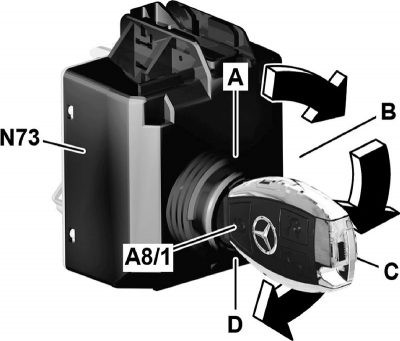 gen5-EIS
gen5-EIS
3.3 How do you program a new EIS?
Programming a new Electronic Ignition Switch (EIS) involves using the XENTRY Diagnostics system with XENTRY Flash access. Unlike older systems, there is no need for a blue programming key. The process includes:
- Connecting to XENTRY Diagnostics: Connect the XENTRY Diagnostics system to the vehicle.
- Selecting EIS Programming: Navigate to the EIS programming function in the XENTRY software.
- Following On-Screen Instructions: Follow the on-screen instructions to program the new EIS. This typically involves entering vehicle-specific data and security codes.
- Verifying Functionality: After programming, verify that the new EIS is functioning correctly by testing the key recognition and engine start functions.
3.4 What is the role of XENTRY Diagnostics in component replacement?
XENTRY Diagnostics is essential for replacing and programming DAS components. It allows technicians to:
- Diagnose faults in the existing system.
- Program new components to match the vehicle’s specifications.
- Perform version coding.
- Personalize components to integrate with the DAS system.
XENTRY Flash rights, which are standard for all users of XENTRY Diagnosis systems obtained through Mercedes-Benz USA, are necessary to complete the programming process.
4. How to Order Theft-Relevant Parts (TRP) for Mercedes-Benz?
Ordering Theft-Relevant Parts (TRP) for Mercedes-Benz vehicles requires specific procedures to ensure security and prevent misuse. Here’s how to navigate the process.
4.1 What paperwork is needed to order TRP?
To order Theft-Relevant Parts (TRP) from a Mercedes-Benz dealer, you typically need the following paperwork:
- Proof of Vehicle Ownership: Original vehicle registration or title.
- Owner’s Proof of Identity: Photocopy of the owner’s driver’s license.
- Authorization: A signed letter from the vehicle owner authorizing you to purchase TRP for their vehicle. VSPs can use the completed D-1 form for this purpose.
- Your Proof of Identity: Your original driver’s license.
4.2 What is a Vehicle Security Professional (VSP) and how to become one?
A Vehicle Security Professional (VSP) is a technician authorized to purchase and install certain theft-relevant parts. Becoming a VSP involves registering with the National Automotive Service Task Force (NASTF). The process includes:
- Visiting NASTF Website: Go to nastf.org.
- Reviewing Information: Read the information on the website and watch the instructional videos.
- Completing Registration Forms: Fill out the necessary registration forms.
- Submitting Application: Submit the completed forms.
- Background Check: Undergo a background check.
- Receiving Credentials: Once approved, you will receive your VSP credentials.
4.3 What parts can be ordered over the counter?
According to the MBUSA TRP Policy, VSPs can buy the following parts over the counter:
- Electronic Ignition Switch (EIS/EZS), including those with integrated central gateway
- Electronic Steering Lock (ESL/ELV/ESCL)
- Electronic Selector Lever module (EWM/ESM)
- Transmission Control Unit for 722.9 (VGS, TCM), including the 722.9 Repair kit
- Intelligent Shift Module (ISM)
- Engine control module (ME-SFI, CDI)
4.4 What is the Fallback Process for key replacement when all keys are lost?
In situations where all vehicle keys are lost, a special procedure called the Fallback Process is required to program a new key. This process involves:
- Completing Paperwork: Fill out a series of forms and provide necessary documentation to Daimler.
- Daimler Registration: Daimler performs the registration process, which allows a new key to be programmed.
- Key Programming: After registration, a new key can be programmed to the vehicle.
- Purchasing Pre-programmed Key: A pre-programmed key can be purchased, but it cannot be programmed until the vehicle has been registered.
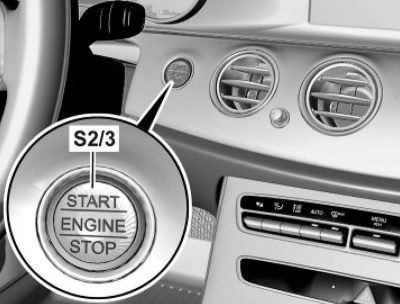 start-button
start-button
5. Drive Authorization System (DAS) and Security
The Drive Authorization System (DAS) in Mercedes-Benz vehicles is crucial for preventing unauthorized vehicle use and theft. It uses advanced technology to ensure that only authorized keys can start the vehicle.
5.1 How does DAS prevent vehicle theft?
DAS prevents vehicle theft through a sophisticated authentication process:
- Electronic Key Verification: The system verifies the electronic key’s authenticity before allowing the engine to start. This involves encrypted communication between the key and the vehicle’s control units.
- Immobilization: If an unauthorized key or no key is present, the system immobilizes the vehicle, preventing the engine from starting.
- Component Security: Key components like the Electronic Ignition Switch (EIS) and Engine Control Unit (ECU) are protected against tampering and unauthorized access.
5.2 What are the security features of DAS4?
DAS4 includes several security features:
- Encrypted Communication: Uses encrypted messages to prevent unauthorized access.
- Rolling Codes: Utilizes rolling codes that change with each use to prevent replay attacks.
- Component Authentication: Authenticates key components to prevent swapping with parts from other vehicles.
- Secure Key Programming: Requires special permissions and online access to Daimler servers to program new keys.
5.3 What is the role of encryption in DAS?
Encryption is critical for securing the communication between the SmartKey and the vehicle’s control units. It ensures that the data exchanged cannot be intercepted or manipulated by unauthorized individuals. The encryption process involves complex algorithms that protect the vehicle from theft and unauthorized use.
5.4 How does DAS comply with security standards?
DAS complies with various security standards to ensure the highest level of protection:
- Industry Standards: Meets or exceeds industry standards for vehicle immobilization systems.
- Regulatory Compliance: Complies with regional and international regulations related to vehicle security.
- Regular Updates: Receives regular updates to address emerging threats and vulnerabilities.
- Secure Data Handling: Implements secure data handling practices to protect sensitive information.
AutoExplain.com is dedicated to ensuring the security and proper function of your Mercedes-Benz Drive Authorization System. Contact us for expert assistance in diagnosing and resolving any DAS-related issues.
6. Generation 5 vs. Generation 6 DAS4 Systems
The Drive Authorization System (DAS) in Mercedes-Benz vehicles has evolved through different generations, with notable differences between Generation 5 and Generation 6 DAS4 systems. These changes affect the vehicle’s operation and security features.
6.1 What are the differences in the EIS location?
- Generation 5: The Electronic Ignition Switch (EIS) is located in the dashboard, similar to previous DAS versions. It includes a key slot where the SmartKey is inserted.
- Generation 6: The EIS is relocated to the driver’s footwell and is inaccessible to the customer. The engine-start button (S2/3) is mounted in the dashboard.
6.2 How does starting the engine differ between generations?
- Generation 5: The engine is started by inserting the SmartKey into the EIS and turning it to the start position.
- Generation 6: The engine is started using a push-button start system. With the brake pedal not pressed, the first button press is equivalent to Position B, and the second press is equivalent to Position C. Pressing the brake pedal and pushing the button starts the engine.
6.3 What are the implications of these changes for keyless start?
- Generation 5: Keyless start is available, but the key can still be inserted into the EIS.
- Generation 6: Keyless start is the primary method of starting the vehicle. The EIS communicates with the SmartKey via radio frequency signals, and there is no key slot in the vehicle.
6.4 How do these changes affect troubleshooting and repairs?
- Generation 5: Troubleshooting involves checking the EIS in the dashboard and the key slot for issues.
- Generation 6: Troubleshooting involves checking the push-button start system and the EIS in the footwell. If the SmartKey does not respond, the driver must place the key in the marked location to start the vehicle.
AutoExplain.com provides specialized diagnostic and programming services for both Generation 5 and Generation 6 DAS4 systems. Contact us for expert assistance in diagnosing and resolving any DAS-related issues.
7. Understanding CAN Bus Communication in DAS
The Controller Area Network (CAN) Bus is a critical component of the Drive Authorization System (DAS) in Mercedes-Benz vehicles, facilitating communication between various control units.
7.1 How does CAN Bus work in the DAS system?
The CAN Bus in the DAS system allows the various control units (Electronic SmartKey, Electronic Ignition Switch, Engine Control Unit, Transmission Control Unit, and Intelligent Servo Module) to communicate and share encrypted messages. This communication is essential for verifying the key’s authenticity and authorizing the engine to start.
7.2 What are the common CAN Bus related issues in DAS?
Common CAN Bus related issues in DAS include:
- CAN Bus Interruption: Faulty wiring, connectors, or control units can interrupt CAN Bus communication, leading to DAS failure.
- Short Circuits: Shorts to ground or power can disrupt CAN Bus signals, causing communication errors.
- Voltage Irregularities: Incorrect voltage levels on the CAN Bus can prevent proper communication.
- Module Failure: Failure of a control unit connected to the CAN Bus can disrupt the entire network.
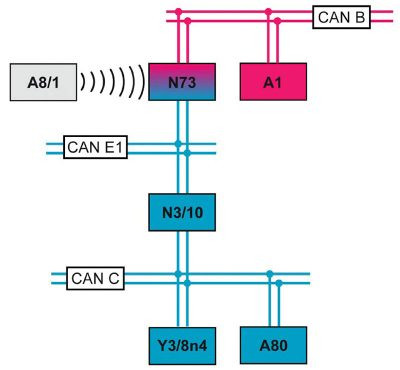 DAS4-CAN-Bus
DAS4-CAN-Bus
7.3 How do you diagnose CAN Bus problems in DAS?
- Visual Inspection: Check wiring and connectors for damage, corrosion, or loose connections.
- Voltage Measurement: Use a multimeter to measure the voltage levels on the CAN Bus wires. The voltage should be within the specified range.
- CAN Bus Tester: Use a CAN Bus tester to analyze the signals and identify any communication errors.
- Diagnostic Trouble Codes (DTCs): Scan the vehicle for DTCs related to CAN Bus communication.
- Module Isolation: Disconnect control units one by one to identify if a specific module is causing the communication problem.
7.4 How can AutoExplain.com assist with CAN Bus diagnostics?
AutoExplain.com offers remote diagnostic services to help identify and resolve CAN Bus issues in the DAS system. Our expert technicians can remotely access your vehicle’s diagnostic system, analyze CAN Bus communication, and provide step-by-step troubleshooting instructions. We can also assist with module programming and replacement to ensure proper CAN Bus function. Contact us via WhatsApp at +1(936)2896695 or email at [email protected] for assistance.
8. Programming and Key Replacement Process for DAS
Programming and key replacement for the Drive Authorization System (DAS) in Mercedes-Benz vehicles requires specific procedures and tools to ensure security and proper function.
8.1 How are new keys programmed in DAS4?
Unlike pre-programmed keys used in DAS3, DAS4 keys are programmed in the vehicle using XENTRY Diagnostics. This process requires special programming rights available to select dealer personnel. The process involves two steps:
- Vehicle Registration: The vehicle must be registered to the online Daimler server using XENTRY Diagnostics. This step can be performed by anyone with a XENTRY system and a working key.
- Key Programming: Within 72 hours of registration, the new key must be programmed using XENTRY Diagnostics. This step requires special permissions and secure access to the Daimler server.
8.2 What tools are required for key programming?
Key programming requires the following tools:
- XENTRY Diagnostics System: A diagnostic tool used to communicate with the vehicle’s control units.
- XENTRY Flash Access: Online access to the Daimler server for programming and coding.
- SmartKey: The new key that needs to be programmed.
- Internet Connection: A stable internet connection for accessing the Daimler server.
8.3 What is the maximum number of keys that can be active?
The DAS4 system allows a maximum of 8 keys (‘tracks’) to be active at any moment. A total of 3 copies of a track can be made. If a key is lost or damaged, up to two replacements per track can be made.
8.4 What happens if all keys are lost?
If all keys are lost, a special procedure called the Fallback Process is required:
- Paperwork: Complete a series of forms and provide necessary documentation to Daimler.
- Daimler Registration: Daimler performs the registration process, which allows a new key to be programmed.
- Key Programming: After registration, a new key can be programmed to the vehicle. A pre-programmed key can also be purchased, but it cannot be programmed until the vehicle has been registered.
AutoExplain.com offers remote programming and key replacement services for the Mercedes-Benz Drive Authorization System. Contact us for expert assistance.
9. Common Diagnostic Trouble Codes (DTCs) Related to DAS
Diagnostic Trouble Codes (DTCs) provide valuable information when troubleshooting issues with the Mercedes-Benz Drive Authorization System (DAS).
9.1 What are the common DTCs associated with DAS?
Common DTCs associated with DAS include:
- B100A15: The SmartKey is not authorized.
- B100A71: The SmartKey is not personalized.
- B105400: The Electronic Ignition Switch (EIS) is faulty.
- B105415: The EIS is not authorized.
- B105464: The EIS has a fault in the internal EEPROM.
- P068500: Main Relay Control Circuit Open.
- P068600: ECM/PCM Power Relay Control Circuit Low.
9.2 How to interpret these DTCs?
- B100A15 and B100A71: These codes indicate issues with the SmartKey. The key may not be properly programmed or authorized for the vehicle.
- B105400, B105415, and B105464: These codes indicate problems with the EIS. The EIS may be faulty, not authorized, or have internal memory errors.
- P068500 and P068600: These codes relate to the main relay or ECM/PCM power relay, which can affect the vehicle’s ability to start.
9.3 How to diagnose and fix these issues?
- Verify the DTC: Use XENTRY Diagnostics to confirm the presence of the DTC and gather additional information.
- Check SmartKey: Ensure the SmartKey battery is good and the key is properly programmed.
- Inspect EIS: Check the EIS for damage and verify its connections.
- Test Relays: Test the main relay and ECM/PCM power relay to ensure they are functioning correctly.
- CAN Bus Communication: Check the CAN Bus for communication errors.
- Programming: Reprogram the SmartKey or EIS if necessary.
9.4 How can AutoExplain.com assist with DTC diagnosis?
AutoExplain.com offers remote diagnostic services to help identify and resolve issues associated with DAS DTCs. Our expert technicians can remotely access your vehicle’s diagnostic system, analyze the DTCs, and provide step-by-step troubleshooting instructions. Contact us via WhatsApp at +1(936)2896695 or email at [email protected] for assistance.
10. When to Seek Professional Help for DAS Issues?
Knowing when to seek professional help for issues with the Mercedes-Benz Drive Authorization System (DAS) can save time and prevent further damage.
10.1 What problems should be addressed by a professional technician?
- Complex DTCs: If you encounter complex DTCs that you cannot diagnose or resolve.
- Component Replacement: If you need to replace components such as the EIS, ECU, or SmartKey.
- Programming: If you need to program a new key or reprogram the EIS.
- CAN Bus Issues: If you suspect CAN Bus communication problems.
- Immobilization: If your vehicle is immobilized and you cannot start it.
10.2 What are the benefits of using AutoExplain.com for remote support?
- Expert Technicians: Access to experienced Mercedes-Benz technicians.
- Remote Diagnostics: Remote access to your vehicle’s diagnostic system.
- Step-by-Step Instructions: Clear and easy-to-follow troubleshooting instructions.
- Cost Savings: Save time and money compared to dealership visits.
- Convenience: Get support from the comfort of your own location.
10.3 How can AutoExplain.com help with complex DAS repairs?
AutoExplain.com offers remote diagnostic and programming services to help with complex DAS repairs. Our expert technicians can remotely access your vehicle’s diagnostic system, identify the root cause of the problem, and provide step-by-step instructions for repair. We can also assist with module programming and replacement to ensure proper DAS function. Contact us via WhatsApp at +1(936)2896695 or email at [email protected] for assistance.
10.4 What information should you provide when seeking assistance?
When seeking assistance with DAS issues, provide the following information:
- Vehicle Information: Year, make, and model of your Mercedes-Benz.
- Symptoms: Detailed description of the problem you are experiencing.
- DTCs: Any Diagnostic Trouble Codes (DTCs) that have been retrieved.
- Previous Repairs: Information about any previous repairs or troubleshooting steps you have taken.
By providing this information, you can help AutoExplain.com diagnose and resolve your DAS issues quickly and effectively.
Dealing with a malfunctioning Mercedes-Benz Drive Authorization System can be frustrating, but you don’t have to face it alone. At AutoExplain.com, our team of skilled technicians is ready to provide you with top-notch remote diagnostic and programming services, ensuring your vehicle’s security and functionality are quickly restored.
Don’t let DAS issues keep you off the road. Contact AutoExplain.com today via WhatsApp at +1(936)2896695 or email at [email protected], and let us help you get back behind the wheel with confidence. Visit our website at AutoExplain.com to learn more about our services and how we can assist you.
FAQ: Drive Authorization System Mercedes-Benz
Q1: What is the Mercedes-Benz Drive Authorization System (DAS)?
The Mercedes-Benz Drive Authorization System (DAS) is an electronic immobilizer system designed to prevent unauthorized use of the vehicle, thereby reducing vehicle theft. It ensures that only authorized keys can start the vehicle.
Q2: How does DAS work?
DAS functions through a complex communication routine between the vehicle’s key and several control units. The system verifies the key’s authenticity before allowing the engine to start. This process involves encrypted messages exchanged via the CAN Bus network.
Q3: What are the key components of DAS?
The main components of the DAS system include the Electronic SmartKey, Electronic Ignition Switch (EIS), Engine Control Unit (ECU), Fully-integrated Transmission Control Unit (ETC), and Intelligent Servo Module (ISM).
Q4: What is the difference between DAS3 and DAS4?
DAS3 utilized both radio frequency (RF) and infrared light for vehicle access, while DAS4 exclusively uses RF signals. DAS4 also introduced the KEYLESS START system, eliminating the need for a physical ignition switch in some models.
Q5: What is KEYLESS GO and how does it relate to DAS?
KEYLESS GO is a feature integrated into DAS that allows the driver to start the car without inserting the key into the ignition. The system communicates with the key via radio frequency signals to verify its authenticity and allow the engine to start with the push of a button.
Q6: What does “Place key in marked location” mean?
The message “Place key in marked location” appears when the vehicle’s system cannot detect the key’s signal. This typically happens when the key battery is low or depleted.
Q7: How are new keys programmed in DAS4?
DAS4 keys are programmed in the vehicle using XENTRY Diagnostics. This process requires special programming rights available to select dealer personnel and involves registering the vehicle to the online Daimler server.
Q8: What is the maximum number of keys that can be active in the DAS4 system?
The DAS4 system allows a maximum of 8 keys (‘tracks’) to be active at any moment, with a total of 3 copies of a track that can be made.
Q9: What should I do if all keys are lost?
If all keys are lost, a special procedure called the Fallback Process is required, involving paperwork and registration with Daimler, after which a new key can be programmed.
Q10: How can AutoExplain.com assist with DAS troubleshooting and repairs?
AutoExplain.com offers remote diagnostic and programming services to help troubleshoot and resolve DAS issues. Our expert technicians can remotely access your vehicle’s diagnostic system and provide step-by-step instructions for repair or programming.
AutoExplain.com, your trusted partner in automotive diagnostics and solutions. Office Address: 1500 N Grant ST Sten Denver, CO 80203.


How to Activate Mercedes-Benz Traffic Sign Assist Function
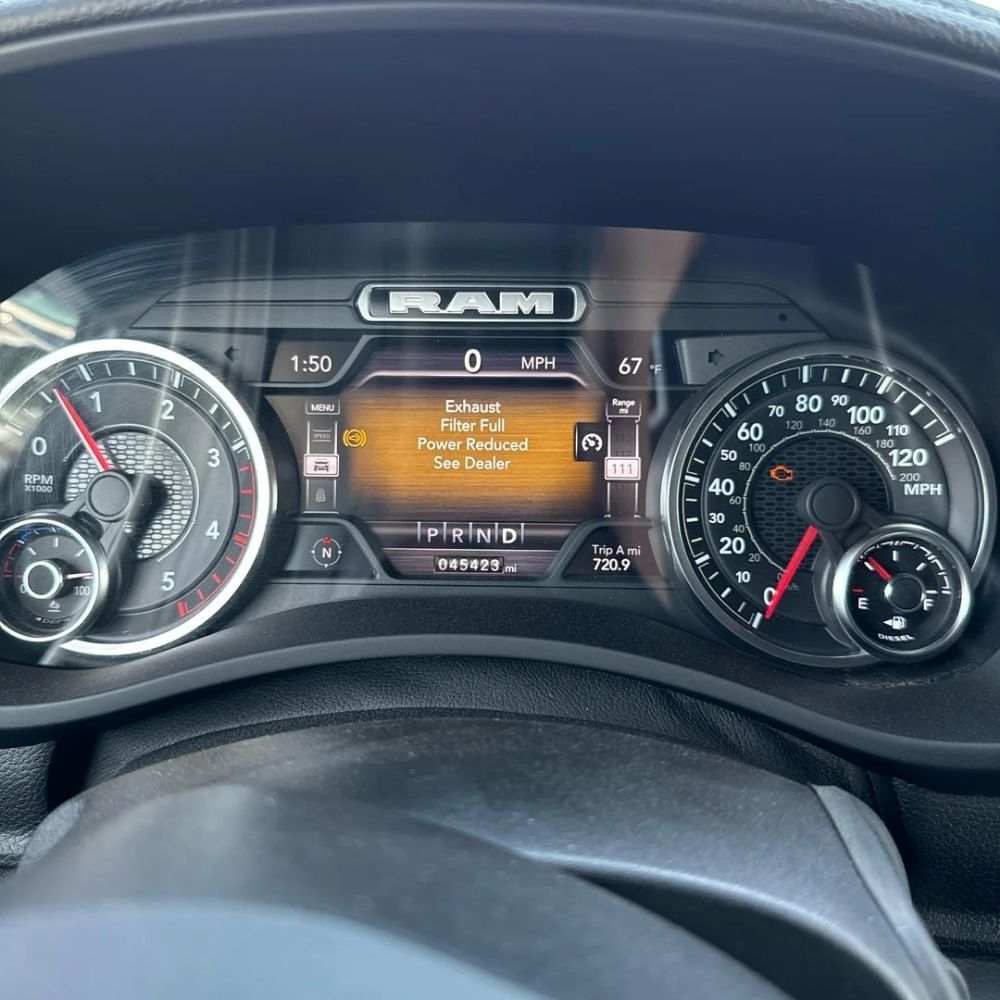
How to Fix the “Exhaust Filter Full” Warning Message on the Instrument Cluster of JLR Vehicles
